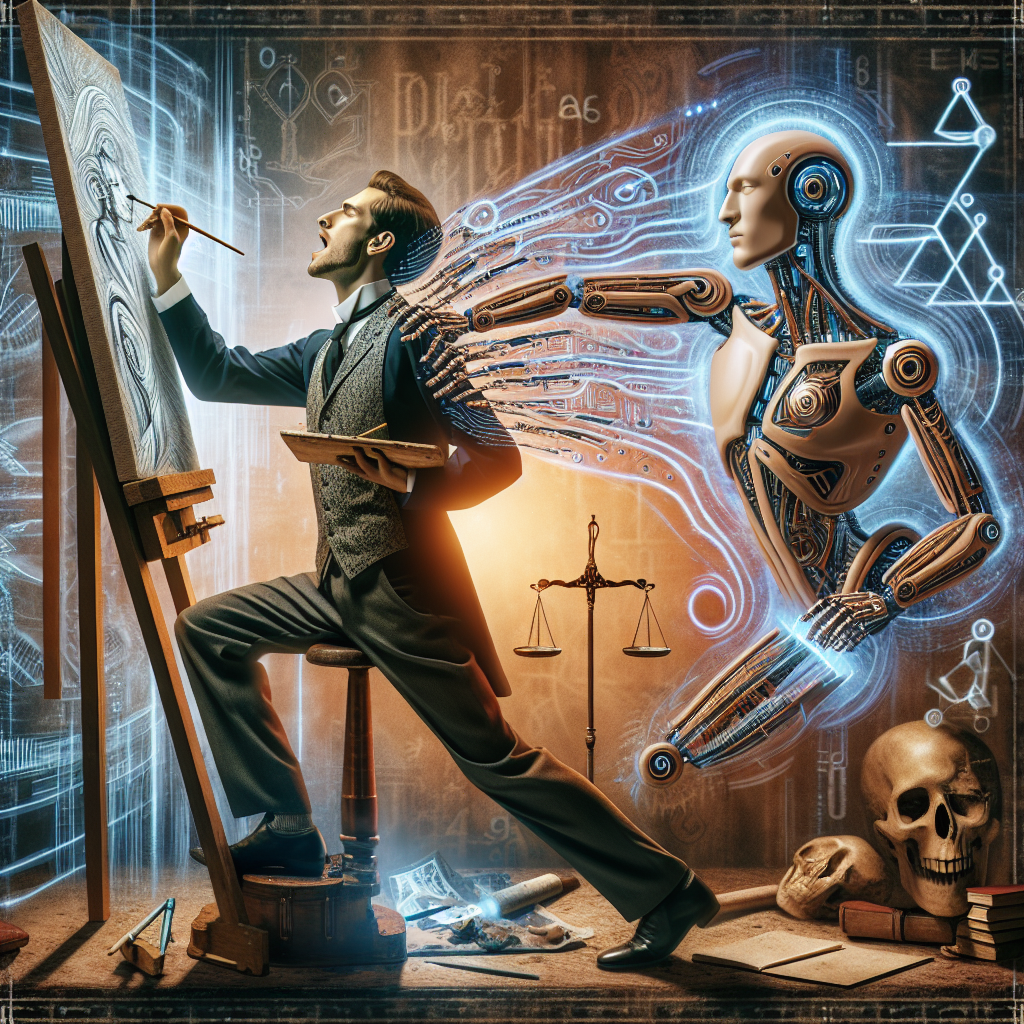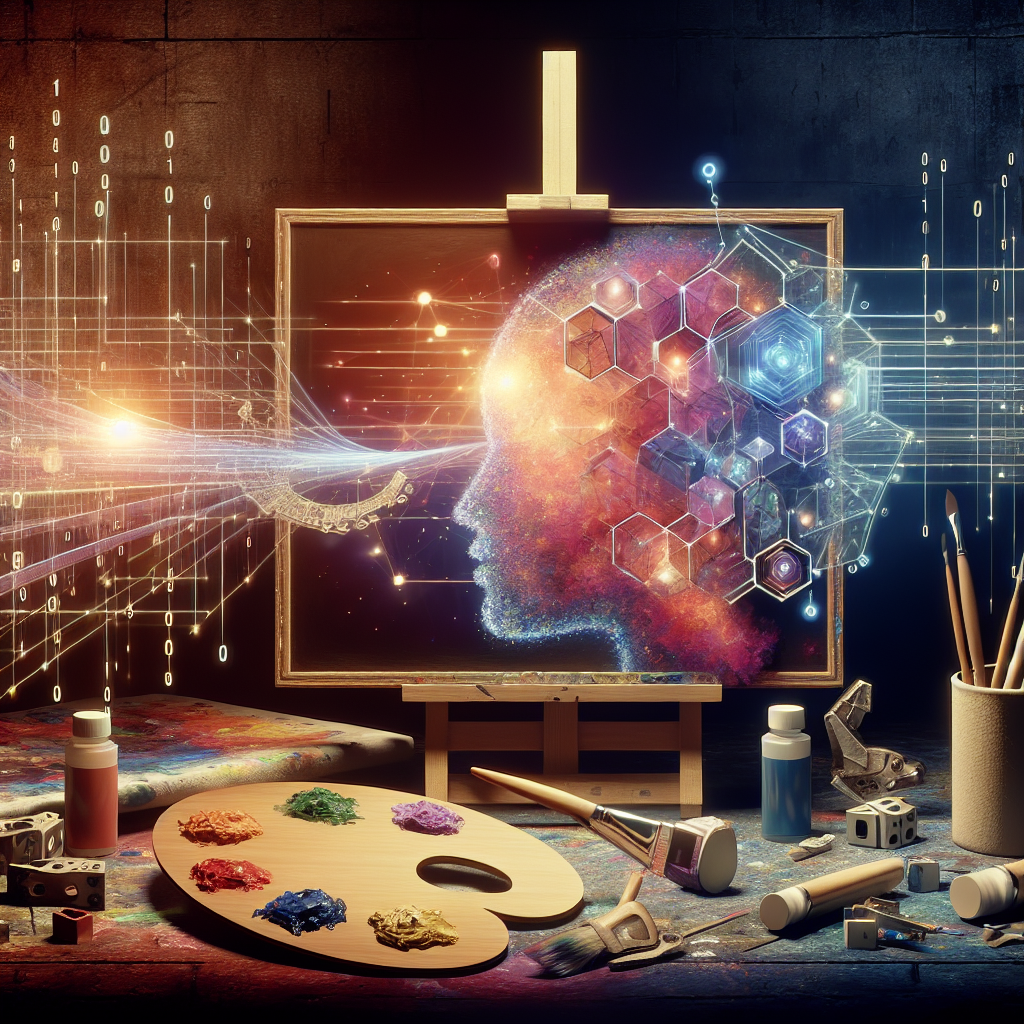Ethics Of AI-Fueled Design Trends. In a world where design trends are constantly evolving, the rise of artificial intelligence (AI) has brought forth a new era in the creative realm. However, while the integration of AI in design may seem innovative and exciting, it also raises various ethical concerns. As designers embrace AI-fueled design trends, it becomes crucial to navigate the fine line between technological advancement and ethical responsibility. This article explores the ethical implications of AI-powered design trends, shedding light on the importance of maintaining an ethical framework in the ever-changing landscape of design.
Design Trends in the AI Era
The Influence of AI on Design Trends
In this era of rapid technological advancements, AI has emerged as a transformative force that is revolutionizing various industries, including design. AI is reshaping the way we approach and create designs, pushing the boundaries of creativity and innovation. With AI’s ability to analyze vast amounts of data, generate simulations, and make predictive models, designers are now able to explore new possibilities and experiment with novel design concepts. From AI-generated art to intelligent user interfaces, the influence of AI on design trends is undeniable.
Advantages of AI-Fueled Design Trends
The integration of AI into the design process offers numerous advantages that enhance both the efficiency and effectiveness of design practices. Firstly, AI enables designers to automate repetitive and time-consuming tasks, allowing them to focus on more complex and creative aspects of the design process. By utilizing AI-powered tools and algorithms, designers can generate design iterations at an unprecedented speed, accelerating the overall design cycle. Furthermore, AI-driven design trends enable designers to gain valuable insights from vast amounts of data, helping them make more informed decisions and create designs that are better aligned with user preferences and needs. This not only leads to improved user experiences but also enhances business outcomes.
Challenges and Ethical Concerns
Bias and Discrimination in AI-Driven Design
While AI offers immense potential in the design realm, it poses significant ethical challenges that need to be addressed. One of the primary concerns is the potential for bias and discrimination to be perpetuated through AI-driven design. Since AI systems learn from existing data sets, they can reflect the biases present in those datasets, leading to discriminatory design outputs. It is crucial to actively mitigate these biases and ensure that AI-driven design promotes inclusivity, diversity, and fairness.
Lack of Human Touch and Emotional Connection
Another ethical concern in AI-driven design is the diminishing human touch and emotional connection in the design process. AI-powered design tools may provide efficient solutions, but they often lack the human intuition, creativity, and empathy that are essential for creating meaningful and emotionally resonant designs. Designers must strike a delicate balance between incorporating AI technology and preserving the human element, ensuring that designs remain engaging and relatable to users on an emotional level.
Privacy and Data Security Risks
AI-fueled design trends heavily rely on collecting and analyzing vast amounts of user data. This raises concerns about privacy and data security, as individuals’ personal information may be vulnerable to misuse or unauthorized access. Designers and organizations must prioritize robust data protection measures, including secure data storage, data anonymization, and obtaining explicit user consent for data collection and usage.
Intellectual Property and Copyright Issues
The use of AI in design raises complex intellectual property and copyright concerns. AI algorithms can generate designs that resemble existing works, potentially infringing upon copyrighted material. Designers using AI tools must ensure that generated designs are original and do not violate any intellectual property rights. Additionally, clear guidelines and regulations need to be established to define ownership and rights pertaining to AI-generated designs.
Automation and Job Displacement
the rise of AI in design also raises concerns about job displacement and the impact on the workforce. As AI systems become more sophisticated, there is a possibility that certain design tasks may be automated, leading to a reduced demand for human designers. It is crucial to address these concerns by reskilling and upskilling designers to leverage AI as a complementary tool rather than a threat to their professional careers.
Unintended Consequences and Unforeseen Solutions
AI-driven design trends may also have unintended consequences that designers need to anticipate and manage. AI algorithms may produce unexpected outcomes, requiring designers to fine-tune and adjust their approaches. Additionally, novel solutions and creative applications of AI technology may emerge, which designers must stay updated on to harness the full potential of AI in design.

Ethical Considerations in AI Design
Transparency and Explainability
In the realm of AI design, transparency and explainability are crucial ethical considerations. Users need to understand how AI systems influence design outputs and make informed decisions. Designers must ensure that the AI algorithms used in the design process are transparent and provide clear explanations of their impact on the final design.
User Consent and Autonomy
Respecting user autonomy and obtaining informed consent is paramount in AI design. Designers must provide users with the choice to opt-in or opt-out of AI-driven design experiences. Additionally, designers should prioritize user empowerment, allowing them to have control over their own design preferences and settings.
Fairness and Equality
AI-driven design must be built upon principles of fairness and equality. Designers need to assess their datasets for potential biases and take active steps to address and mitigate them. By incorporating diverse perspectives and avoiding discrimination, designers can ensure that their AI-driven designs are fair and promote equality.
Human-Centered Design Approach
In the AI era, it is essential to maintain a human-centered approach to design. Designers must prioritize human needs, emotions, and experiences throughout the design process. By blending AI technology with human intuition and empathy, designers can create designs that are not only visually pleasing but also deeply resonate with users on a human level.
Accountability and Responsibility
Designers using AI in their practice must embrace accountability and take responsibility for the outcomes of their designs. It is essential to continuously monitor, evaluate, and refine AI-driven design processes to ensure ethical standards are maintained. Designers should actively seek feedback from users and make necessary adjustments to enhance the overall user experience.
Mitigating Ethical Issues in AI Design
Ensuring Diversity and Inclusion in the Design Process
To address the bias and discrimination challenges in AI-driven design, it is crucial to foster diversity and inclusion within the design process. By including individuals from different backgrounds and perspectives, designers can mitigate the risk of bias and ensure that AI-powered designs represent a broad range of users.
Evaluating and Addressing Bias in AI Algorithms
Designers should proactively evaluate AI algorithms for biases and take steps to correct them. This involves examining training data, identifying potential biases, and applying corrective measures to ensure fairness and inclusivity. Regular audits and evaluations should be conducted to identify and rectify biases that may arise during the design process.
Implementing Ethical Guidelines and Regulations
Designers must adhere to ethical guidelines and regulations governing the use of AI in design. These guidelines should outline the ethical considerations, responsibilities, and best practices that designers should follow. Regulatory bodies should collaborate with designers and AI experts to develop comprehensive frameworks that govern the ethical use of AI in the design industry.
Continuous Monitoring and Evaluation
To ensure ethical standards are met, designers should establish processes for continuous monitoring and evaluation of AI-driven design practices. Regular audits, user testing, and feedback loops should be implemented to identify and rectify any ethical concerns that arise during the design process. By actively monitoring and evaluating, designers can stay ahead of potential issues and ensure that AI-driven designs maintain ethical integrity.
Collaboration Between AI Experts and Ethicists
Designers should collaborate with AI experts and ethicists to navigate the ethical complexities of AI-driven design. By working in multidisciplinary teams, designers can gain insights into ethical challenges and develop appropriate solutions. This collaboration can lead to the development of ethical frameworks and guidelines that enrich AI-driven design practices.

Positive Impact of Ethical AI Design
Enhanced User Experience
ethical AI design can greatly enhance the user experience by considering user preferences, needs, and emotions. By incorporating ethical considerations, designers can create designs that are inclusive, accessible, and user-centric. This results in designs that are intuitive, visually pleasing, and resonate with users on a deeper level.
Empowering Users with Control and Trust
Ethical AI design empowers users by giving them control over their design experiences and building trust. When users have control over their design settings and preferences, they feel more engaged and invested in the design process. Furthermore, transparency and explainability in AI-driven design foster trust between designers and users, leading to stronger user-designer relationships.
Creating Inclusive and Accessible Designs
Ethical AI design promotes inclusivity and accessibility by considering the diverse needs and preferences of users. AI-powered design tools can assist designers in creating designs that cater to a wide range of users, including those with disabilities or unique requirements. By prioritizing inclusivity, designers create designs that are accessible to all, breaking down barriers and ensuring equal participation.
Promoting Sustainability and Environmental Responsibility
AI-powered design can contribute to sustainability and environmental responsibility. By utilizing AI algorithms to optimize energy consumption, reduce material waste, and promote sustainable practices, designers can create environmentally conscious designs. This fosters a more sustainable future, where design solutions align with ecological values and minimize the carbon footprint.
Fostering Social Good
Ethical AI design has the potential to foster social good by addressing societal challenges and solving pressing issues. AI-driven designs can be utilized to tackle complex problems in healthcare, education, poverty, and environmental conservation. By harnessing the power of AI responsibly, designers can create designs that have a positive impact on individuals, communities, and the world as a whole.
Conclusion Ethics Of AI-Fueled Design Trends
In conclusion, the AI era presents both opportunities and ethical challenges for design. While AI-fueled design trends have the potential to revolutionize the industry, there is a need for ethical considerations to guide and shape this transformation. By addressing the challenges and embracing ethical principles, designers can harness the positive impact of AI design while ensuring fairness, inclusivity, and user-centricity. Through collaboration, transparency, and continuous evaluation, the design community can pave the way for a future where AI and ethical design seamlessly coexist, enhancing user experiences, and contributing to societal betterment.
